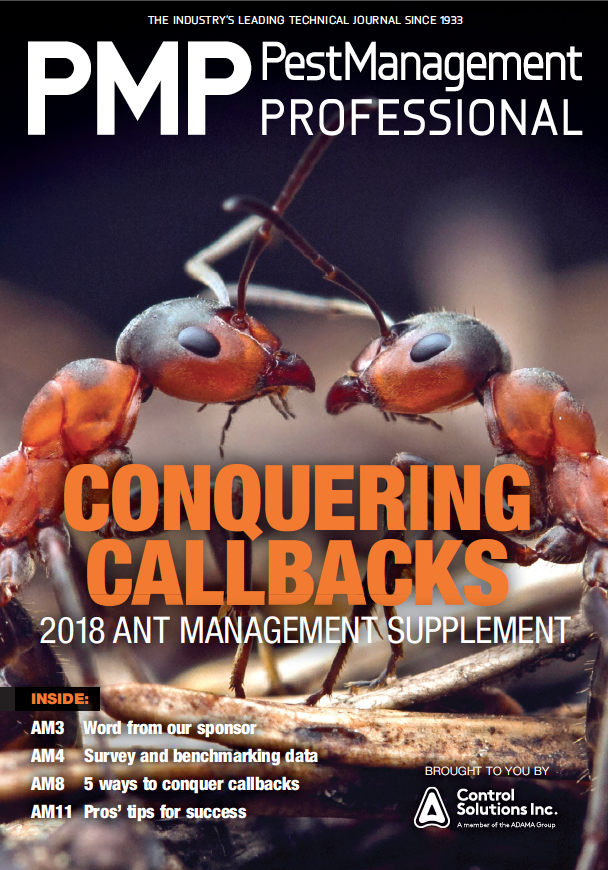Although more than 12,000 species of ants roam the earth, the National Pest Management Association reports pest management professionals (PMPs) battle carpenter ants most often.
Pest Management Professional’s (PMP’s) exclusive 2018 Ant Management Survey shows this ant species generates the most jobs and the most callbacks. Readers responding to previous PMP Ant Management Surveys have had the same response.
Know the species
Because so many ant species exist, proper identification is the first step toward successful management. It was the top tip offered by survey respondents.
“You must identify species correctly,” says Stacey White, owner of Vintage Pest Management in Peoria, Ariz. “This is especially important because this is the deciding factor on which product(s) you’re going to use and where to place them.”
Each species exhibits its own unique behavior, and proper identification helps PMPs develop solid plans of action.
“Be aware of what species of ant you are dealing with,” says Andrew Dzieman, manager of Borite in Sherman Oaks, Calif. “Their behaviors will guide you on how to treat, and where to find them.”
Cut down on callbacks
The majority of the PMPs who answered our 2018 Ant Management Survey report callbacks occur less than 5 percent of the time. To help eliminate callbacks, they report that choosing the appropriate product for the ant species is a must.
“Research is required before applying products: Labels should always be read, and products should be researched before use,” advises Dzieman. “Use multiple application techniques and integrated pest management (IPM). The combination is the key.”

A thorough inspection revealed ants behind an electrical outlet. PHOTO: Gustavo Hernandez
Gustavo Hernandez, CEO and termite and pest control specialist for H2 Environmental Pest Management in Astoria, N.Y., says he learned early on in his pest control career the importance of thorough inspections.
Back then, he was called out to a home, he says, where a PMP who had been there two weeks before failed to find and manage ants.
“When I arrived, my inspection found ants nesting in an electrical outlet in the kitchen,” Hernandez explains. “I treated the outlet and after a week, the client did not see even one ant.”
His perseverance continues to pay off. Service calls for ants are up. Currently, ant management revenue is about 25 percent of total revenue; a couple of years ago, it was 5 percent to 10 percent.
The ant management services he provides include one follow-up visit three weeks after the initial service. “We get to see the results, and our clients remember how good we are,” he says.
Vintage Pest Management’s White advises against rushing through inspections.
“Ant inspections can be a game of chess,” she says. “You have to carefully study your opponent — the ants — follow their behavior, and then use it against them.”
Following up will help ensure customer satisfaction. But that’s what PMPs should do. What should they not do? Promise customers they will never see an ant.
“No sooner do the words leave your lips and BOOM, ants are back, full force,” White says. “The customer will be calling you back and you’ll have to fumble through an explanation. The key is management.”

Leave A Comment